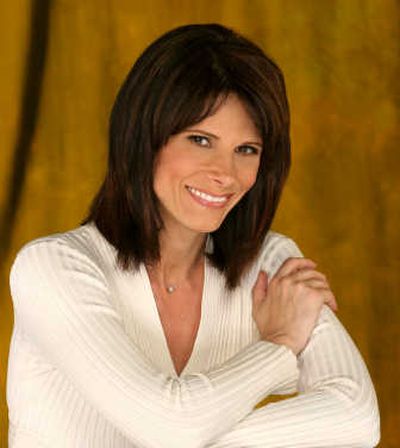Dealing with crisis

In a competitive and youth-obsessed business, most everyone gets The Call sometime.
For ex-CNN daytime anchor Daryn Kagan, it came in January 2006. She was brought into an office and told that CNN would not renew her contract when it expired at the end of the year.
Kagan was lucky in one sense: She wasn’t escorted out that day by security. But by the first of September, she was gone.
Left with a personal crisis sadly familiar to many, Kagan reinvented herself with a Web site devoted to telling inspirational stories.
Now, with a new book, two TV documentaries and a planned show for broadcast, she’s trying to build an empire.
“I don’t have a Web site,” says Kagan, 45. “I have a media company.”
DarynKagan.com explodes onto the screen in a sunburst of orange, yellow and red. It features a centerpiece story of the day and an archive of dozens more: a man with two amputated legs who competed in an Ironman triathlon; a woman who sends donated breast milk to Africa; a man who rehabilitated Michael Vick’s pit bulls; a coffee shop worker who donated a kidney to a regular customer.
They’re the kinds of stories Kagan loved doing for television. They didn’t have the import of war and peace but, she said, were “the ones that made my heart go zing.”
Kagan was initially inspired by former NBC correspondent Kevin Sites’ Web site about war zones. At first, she wanted to sell the idea to Yahoo!. After the company passed, she decided to do it herself from her Atlanta home.
Most of the story ideas for DarynKagan.com (motto: “show the world what’s possible”) come from readers, who are encouraged to write in.
They’re the type of stories many hard-bitten journalists roll their eyes at. Kagan said it’s an important part of the media mix.
“If you’re really invested in feeling bad about the world, there are a lot of media outlets out there that you can turn to,” she says.
The site is not religious, although Kagan, who is Jewish, says she believes the mainstream media does a poor job of covering spiritual matters that are an important part of many people’s lives.
Kagan has made two documentaries as part of her new business.
“Breaking the Curse,” which aired on PBS, was about an Atlanta-area woman working to end leprosy in India. “Solartown USA,” which hasn’t found a TV home yet, is about a Wisconsin town that made a commitment to solar power in the 1970s.
Kagan is also shopping for a broadcast component to her new brand, either a syndicated TV or radio show.
Her book, “What’s Possible” (Meredith Books, 256 pages, $14.95), includes 50 stories about people who overcame obstacles to achieve dreams – starting with her own.
There were certain serendipities along the way to launching her Web site. When Kagan went to register the domain name DarynKagan.com, she found it had already been claimed by a cybersquatter – a person who registers names for Web sites in the hope that someone will eventually pay big money to acquire the rights.
Kagan called the Florida man who had bought it, and after they talked he volunteered to give it to her – for free. An old friend from elementary school signed up as her publicist.
She’s also taken advantage of new technology, like Voxant.com, a Web site that distributes her stories elsewhere online. A company that sells advertising to many Web sites also does it for her, meaning she doesn’t have to hunt for that support herself.
While CNN would likely send a camera crew if it was doing a story on the Minnesota woman who sends breast milk to Africa, Kagan sends instructions to interview subjects to set up their own video camera. She tells them to put a phone on their lap and switch it to speaker, and respond to the questions she asks them.
That’s how she interviewed Desmond Tutu, and manager Tony LaRussa after the St. Louis Cardinals won the World Series.
Kagan had never thought of starting her own business before. A small staff helps her, but she has discovered an exhausting reality of the blogging life: The day doesn’t really end; you just have to decide when to shut it down.
There are advantages, though.
“In the news business, you have to get picked,” says Kagan, ex-girlfriend of another media emperor, Rush Limbaugh. “You have to get hired. There’s a lot of heartbreak in that process.
“If I do it this way, I don’t have to get picked. I can pick me.”
Given the way the traditional news business is shrinking, she says she’d be more scared to have taken another job in television.
Kagan had quietly prepared for the possibility that her last contract with CNN wouldn’t be renewed. She banked most of her pay, enabling her to survive the uncertainty of starting something new.
Sugar-shock might be an occupational hazard of her new work telling inspirational stories. But there’s one very positive byproduct, she says:
“It’s really hard to have a bad day.”